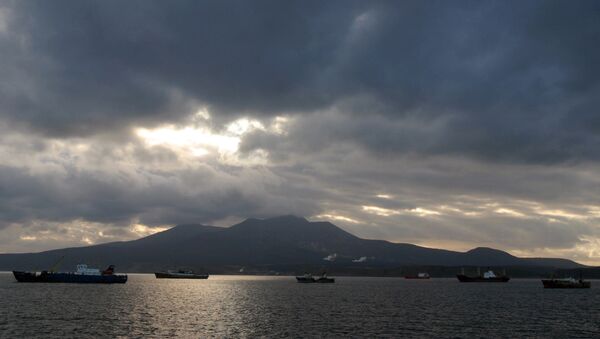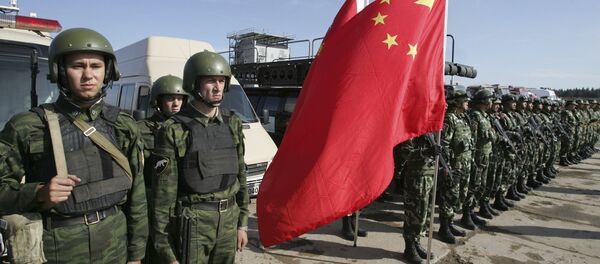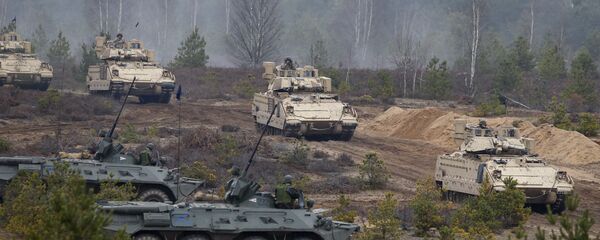In response, Japanese Chief Cabinet Secretary Yoshihide Suga claimed that the Russian move contradicts the stance of Tokyo.
Although Moscow's initiative has come as a surprise to some observers, Russia has reason to be cautious.
"The Russian decision to strengthen its position in the region also has an immediate context. Specifically, this decision has come against the way Japan has been militarizing the whole belt of Islands stretching 1,400 km from the Japanese mainland towards Taiwan. Japan's increasing drive towards militarization has come as a part of the US' 'Asia Pivot'," Salman Rafi Sheikh, research-analyst of International Relations and Pakistan's foreign and domestic affairs, notes in his article for New Eastern Outlook.
In mid-February 2016 The Japan Times wrote that Tokyo is considering buying a US land-based high-altitude interception system, known as THAAD (Terminal High Altitude Area Defense).
Lockheed Martin's THAAD is capable of intercepting short- and medium-range ballistic missiles beyond the Earth's atmosphere. The system has a range of 200 kilometers (124 miles).
Earlier, in August 2015, TheDiplomat.com reported that the US State Department "approved a possible $1.5 billion sale of two Lockheed Martin Corp Aegis combat systems as well as new anti-submarine warfare equipment to Japan," quoting the US Defense Security Cooperation Agency (DSCA).
Sheikh underscores that Japan has made a fundamental shift from its post-WW2 policy to a new military doctrine that allows the country to engage its military personnel in overseas combat operations.
"Supporters of the legislation, including top US officials, say Japan needs to expand the role of the SDF to counter potential threats from nations such as China and North Korea and Russia," Sheikh underscores.
Meanwhile, on March 22, 2016, US Defense Secretary Ashton Carter confirmed that Washington and South Korea have reached an agreement to deploy the THAAD missile defense system to the Korean Peninsula to counter Pyongyang.
In an interview with Sputnik Russian Ambassador to China Andrey Denisov underscored that the deployment of THAAD to South Korea poses a threat to Russia and China's security.
"This creates considerable challenges to the security of other countries, including Russia and China. I am talking about the US system THAAD, a missile system that… cannot be considered other than the creation of a certain threat to China and Russia," Denisov told Sputnik on March 21.
It becomes clear that the Pentagon wants to kill two birds with one stone.
"It is perhaps for this reason that Russia's decision to build a naval base in its far east comes as a direct force multiplier for China, which has, on its part, been looking to boost up its alliance with regional states as a means to counter the US' geo-strategic moves," Sheikh elaborates.
"While it is going to pose a big challenge to the US and Japan, it is also explicitly indicating to the US and its allies that its 'Asia Pivot' would have very limited maneuvering space in the region-hence, Japan's 'deep concerns' over Russia's heavy military presence in its far east," the analyst concludes.




